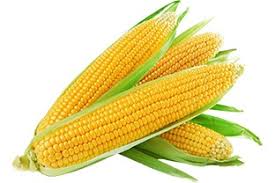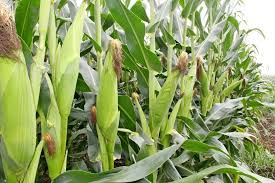![]()
If you’ve landed on this article page, you’re probably searching for a
good business idea—an idea that’s light on the pocket but heavy on
returns, promising both a fulfilling journey and potential profit.
|
How to start a lucrative maize mechanize
farming in Nigeria
Maize is a prominent cereal crop and one of Nigeria’s most
essential staple foods. Because of its genetic versatility, it
is the most commonly farmed plant in the nation, from the damp
evergreen environment of the forest region to the arid ecosystem
of the Sudan savanna. Maize farming is one of the most
profitable types of farming in Nigeria.
The Institute of Tropical Agriculture (IITA) valued Nigeria’s
maize industry to be at $6bn, which is about N2.5 trillion.
Maize is in high demand in the country, local production only
meets about 72% of the total annual demand for maize, according
to data by the Federal Ministry of Agriculture, Nigeria churns
out about 10.5 metric tons of maize annually while having a
demand of 15 million metric tons. This indicates that there is a
huge opportunity for intending local maize farmers or maize
producers in Nigeria.
About 800 million tons of maize was produced globally in the
year 2019, with Nigeria producing about 11,000 tons, Nigeria is
the largest producer of maize in the Africa, followed by South
Africa. In spite of the huge production of maize in Nigeria,
Nigeria cannot satisfy local demand of maize. Nigeria does not
produce as much sweet corn like maize. Every year, a significant
percentage of maize is imported to satisfy local demand in the
country.
The savannas do not require the same level of land preparation
as the country’s forest zone.
Land clearing must be conducted long before the rains
commence in the Guinea grasslands, where the forest cover is
very dense. Immediately the rains begin, proper ridges should be
built. While deep cultivation benefits the crop, zero tillage
does not reduce yields. Furthermore, maize should be planted in
75-centimeter-wide ridges for maximum grain output. Since the
soil in the northern part of Nigeria is loosely packed,
animal-drawn tools, as well as hoe, hand, and tractor-mounted
plowing equipment, can be utilized to create ridges.
Because it is photoperiod insensitive, maize can be cultivated
at any time yearly, allowing for greater flexibility in fitting
it into various cropping patterns. Maize can be cultivated
either manually (i.e., hand cultivation) or mechanically
(machine planting). In the Nigerian savannas, the suggested
plant spacing for maize is 75 by 50 cm, with two plants per
stand.
Planting should begin immediately as the rains start, preferably
directly after a good rainfall. Rainy season in northern Nigeria
varies in accordance with the various ecological zones and from
year to year. However, in the main ecological zones, optimal
planting dates typically fall within the following periods:
As a maize farmer, you should be aware that disease or pest
attacks can have a significant impact on your productivity. To
prevent this calamity from destroying your investment, you need
to regularly monitor the plants to spot pests or diseases that
can cause significant losses a short while after planting.
The quality of the soil and crop plays a vital role in the
quality of farm output produced at harvest. Monitoring and
ensuring plants are growing correctly, pest detection, crop
infection, proper fertilization of crops, and more can be
strenuous for farmers to do manually, especially if the farm
sits on a large expense of land. However, with a soil and plant
health monitoring AI powered solution, it is now easier for
farmers to monitor their plants and soil.
The average yield of maize farming in Nigeria as in other
Sub-Sahara Africa countries is generally low 1.68 tons/hectare,
which is very low compared to average yield in United States 9.3
tons/hectare over the same period.
Maize Farming Plant Population:
After you have planted your maize, these are the expected plant
population to be expected per maize variety and planting
methods:
(i) Open-Pollinated/Popcorn varieties: Hand planted, 90 cm x 40
cm, 2 plants/stand is expected to give 55,555 plants/ hectare.
(ii) Hybrids: Hand planted, 90 cm x 40 cm, 2 plants/stand is
expected to give 55,555 plant/ hectare.
(iii) Mechanical Planting: (Any Variety) 75 cm x 25 cm, 1
plant/stand to given 53,555 plants/ hectare or 90 cm x 20 cm,
1plant/stand giving 55,555 plants/ hectare. There should be no
thinning or supplying except in very bad cases.
Always use certified seeds of recommended varieties for good
crop establishment.
Plant population is can determine if a maize farmer will make
profit or not. To make good profit in maize farming, you need to
have at least 50,000 stands of maize plants per hectare; this
can be increased to up to 70,000 stands if you plant some hybrid
varieties.
It is advisable you have an intra-plant spacing of 25 cm and an
inter-row spacing of 75 cm when planting maize. This will ensure
that your farm will have about 55,000 plants per hectare. If you
do 20cm intra-plant spacing, you can increase your maize plant
population per hectare to about 66,000.
The following are some of the equipment needed for maize farming
in Nigeria: Tractors, Irrigation Equipment, Cutlasses, Hoes,Boom
Sprayers, Drones, Plough, Harrowers, Ridgers etc.
Seeding and Planting of the Maize Seeds on the Field: 10 – 20 kg
of maize seeds should be planted in one hectare of farmland.
Maize seed should be planted as a single seed per hole. A hole
of 2-5 cm should be dug and a single seed of maize should be
buried in the hole.
Pioneer Corn Seed – Hybrid: Dupont Pioneer Hybrid maize seed is
one of the most popular hybrid maize seeds in Nigeria. Pioneer
hybrid maize seeds can grow in all regions in Nigeria. It has
good tolerances and resistance to a lot of pests and diseases
that affects corn plants. Hybrid pioneer seeds can also tolerate
crowding unlike other maize varieties. This maize variety can
yield up to 12 tons per hectare. We tried this variety and we
had a yield of 7.6 tons per hectare. I have seen local farmers
getting between 5-7 tons per hectare cultivating this variety in
Kaduna. This variety comes in the yellow and white form.
Maize Farming for Fresh Cobs: 55,000 – 75,000 fresh maize cobs
are expected to be harvested from one hectare of maize. Hybrid
pioneer maize seeds can yield two cobs per plant.
Let us assume that 70,000 fresh maize cobs will be harvested
from one hectare of maize. If you sell each fresh cob for N15,
you will earn a sales revenue of N1,050,000 from your one
hectare maize farmland.
N60,000 is expected to be used for land preparation and planting
of maize seeds per hectare, N30,000 for hybrid pioneer seeds per
hectare, N20,000 for herbicides and insecticides, N60,000 for
fertilisers and N100,000 for labour and other expenses. Total
cost for one hectare of maize is N320,000. Profit from one
hectare of maize farm if you sell fresh maize cobs will be
N730,000.
Selling fresh maize cobs is far more profitable; however, your
farm must be near a big town or city.
Maize farming is now cultivated throughout the year because of
irrigation system. Ensure your land is properly prepared at the
appropriate time to receive viable maize seeds. You are to
cultivate recommended varieties for your zone. Use correct
spacing when sowing. Apply fertilizer according to soil test
result, follow the recommended agronomic practices and use
treated seeds from a certified company. Plan for marketing,
processing and storage from the beginning to prevent wastage and
maximize profit. Get our training guide on Maize Farming Businesss. This basic guide will equip you with the knowledge and information you need to acquire to start your own very successful real estate business in Nigeria.
|







